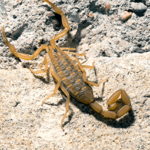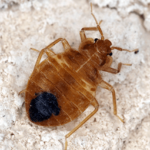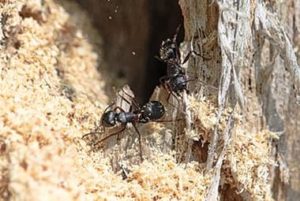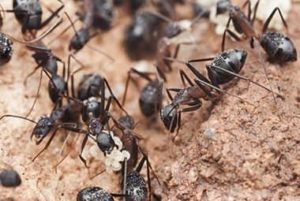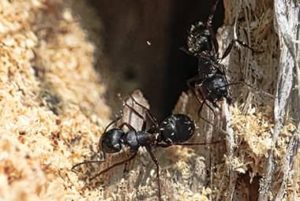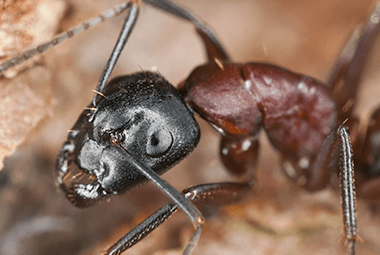
Tis the season again, the season for ants to begin infiltrating our homes. While it is never pleasant to see a few ants, or a few hundred ants, crawling around on our pet’s food dish or a piece of food that was dropped on the floor, it should be especially alarming if you see large black carpenter ants crawling around. And it is important to note that these ants are usually only seen in living areas 1 or 2 at a time. But if you see 1 or 2, there are likely hundreds, or thousands, just out of sight inside the wood of your home.
What Is More Damaging, Termites Or Carpenter Ants?
While it is well-known that termites are the most destructive of all the wood-destroying organisms, carpenter ants should never be ignored. While termites cost U.S. property owners billions of dollars each year and carpenter ant damage is only in the hundreds of millions, that’s still pretty serious. So it is important that we know how to identify these destructive creatures and know what we can do about them before they can do extensive damage.
How To Identify Carpenter Ants And Carpenter Ant Swarmers
Carpenter ants are the largest ants you’ll see inside your home. These black–or dark red–colored ants measure from 7 to 12 mm in length, with winged carpenter ants being as much as 22mm in length.
Ways to tell the difference between any winged ant swarmer (typically called “flying ants”) and termite swarmers are the following: Ant swarmers have elbowed antennae. Termite antennae are straight or slightly bowed. Ant swarmers have a pinched or constricted waist. The waists of termite swarmers are broad. And ant swarmers have a front pair of wings that are longer than the back pair. Termite swarmer wings are similar in length.
What Factors Are Conducive To Carpenter Ant Infestations?
Carpenter ants, like so many other household pests, typically get into homes by way of gaps and cracks in foundations or walls. If wood is wet, or rotting, this makes it even easier for pests to get in. Some things that can cause wood to be wet or rotting include broken or obstructed gutters, leaky spigots or hoses, and areas of overgrown vegetation that holds moisture close to walls and the foundation.
-
To keep carpenter ants from invading, it is important to address these issues.
-
Seal up gaps, cracks or holes in your foundation or walls.
-
Dry up moist areas surrounding your home.
-
Repair or unclog gutters and be sure water is channeled away from your home.
-
Repair any leaky spigots or hoses.
While these DIY steps will help to keep carpenter ants and other pests at bay, the best way to protect your home from these wood-destroying insects is to partner with a professional pest control company. If you live in our Tennessee service area, contact us today to learn more about our residential pest control options.
How To Avoid Carpenter Ants This Spring in Knoxville TN
Serving East Tennessee since 1971
